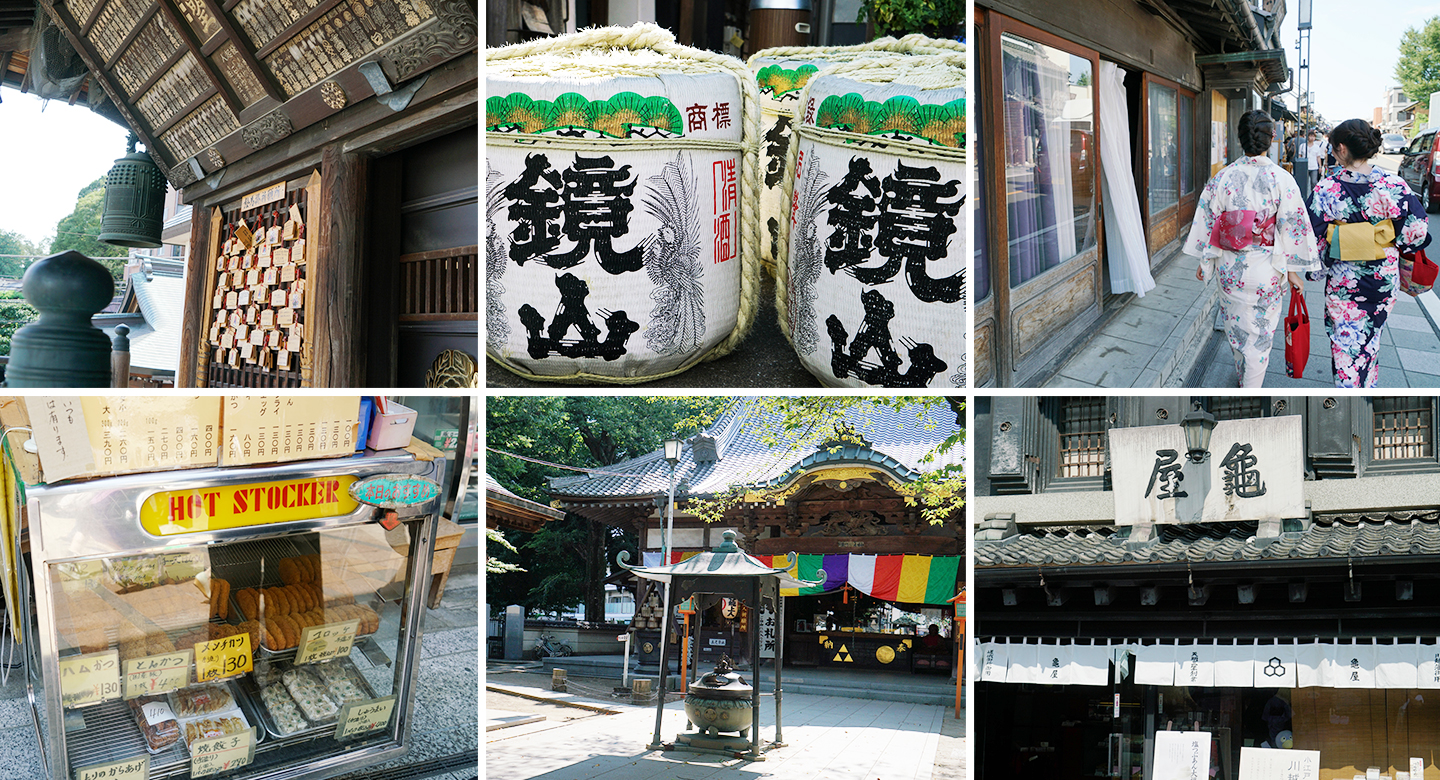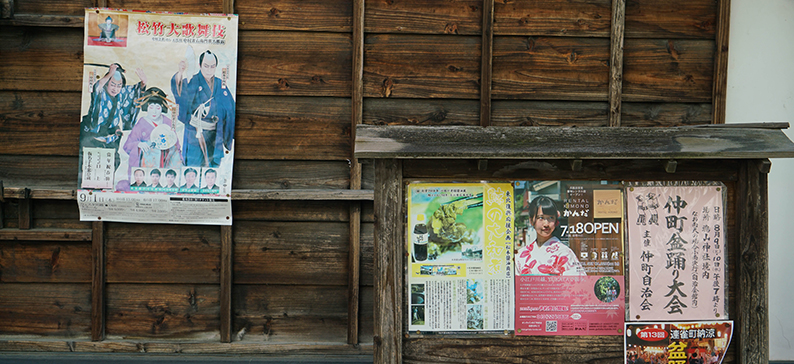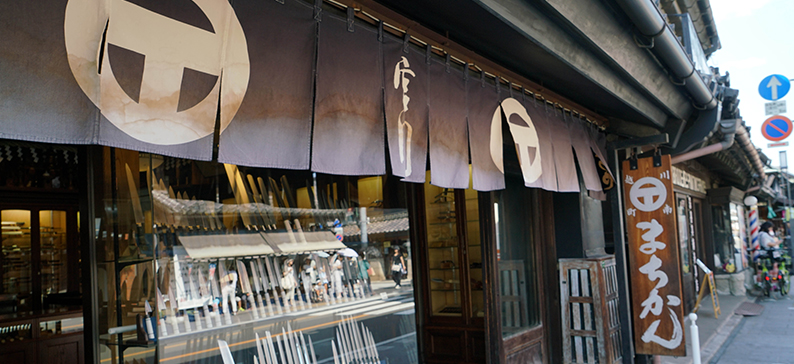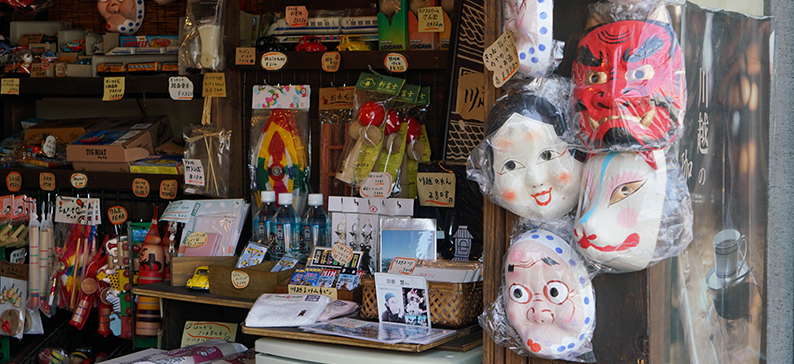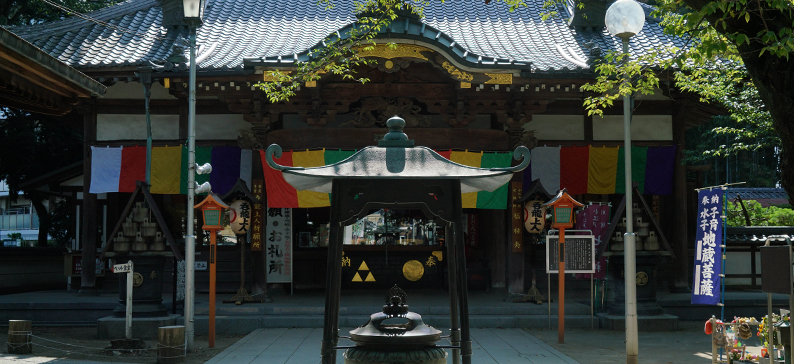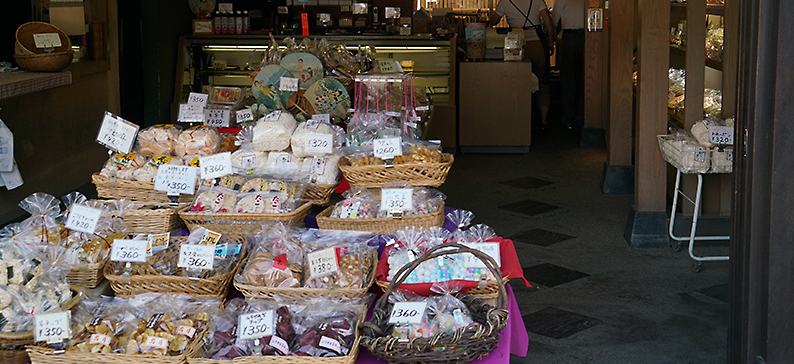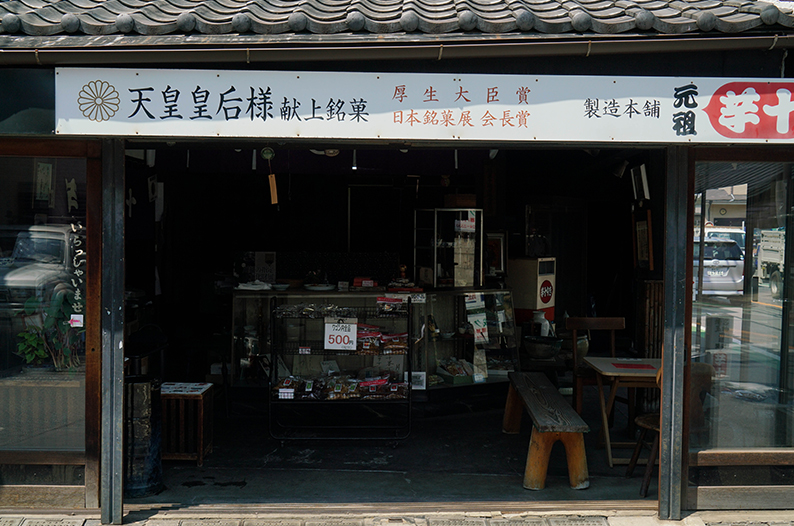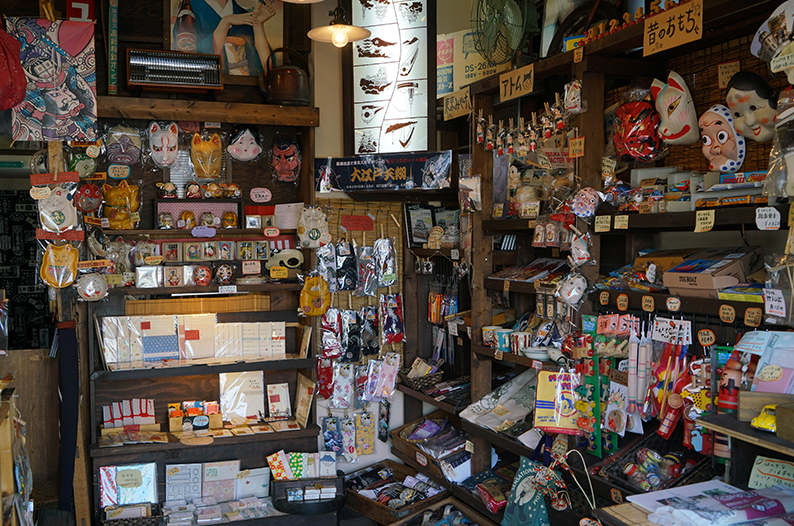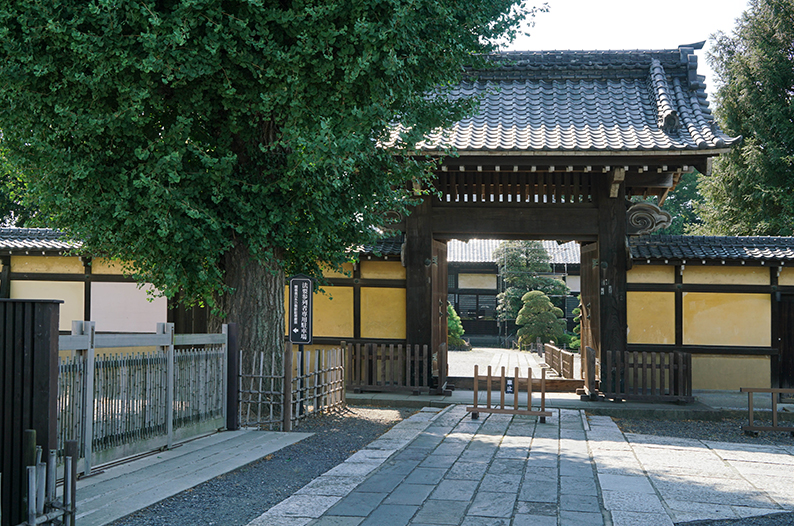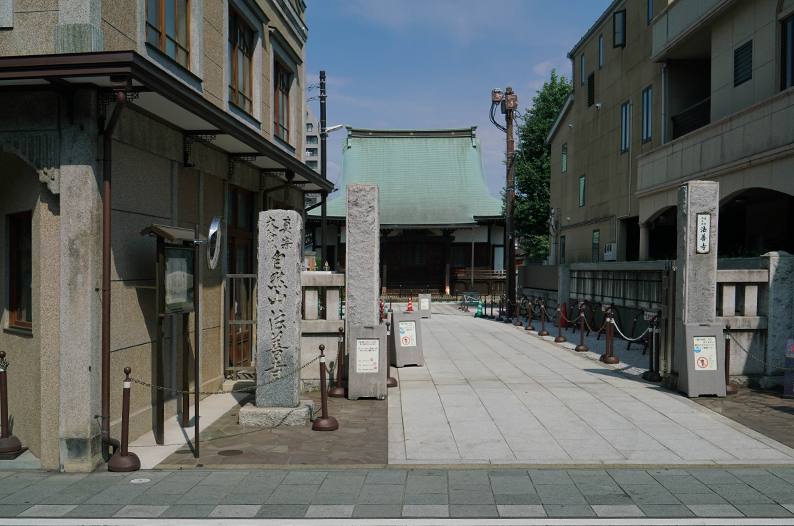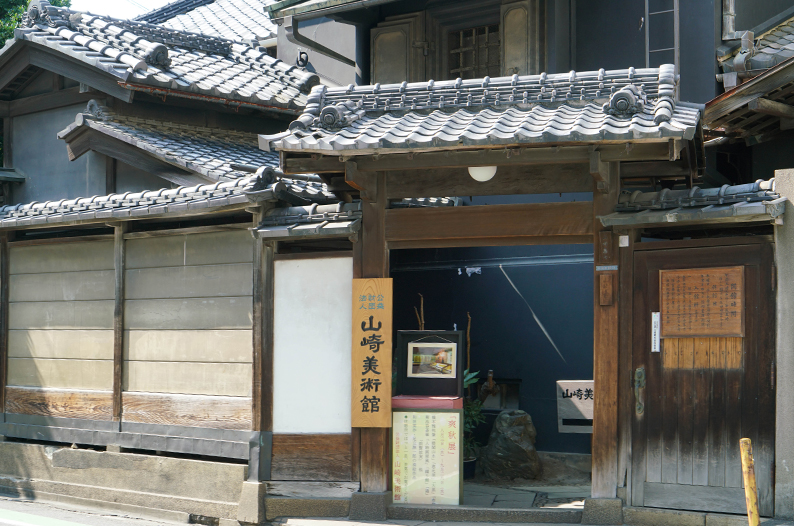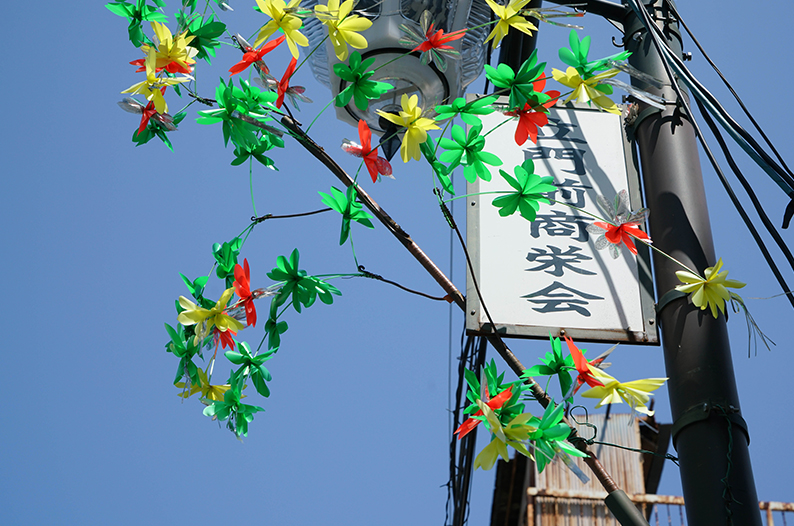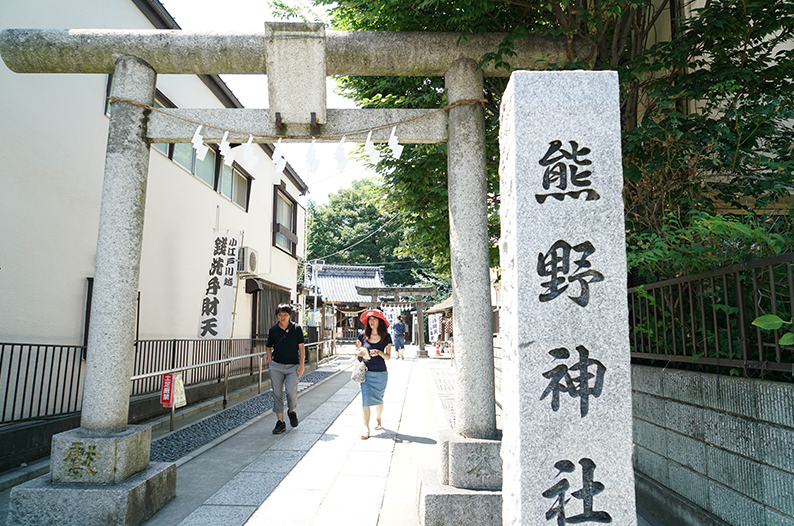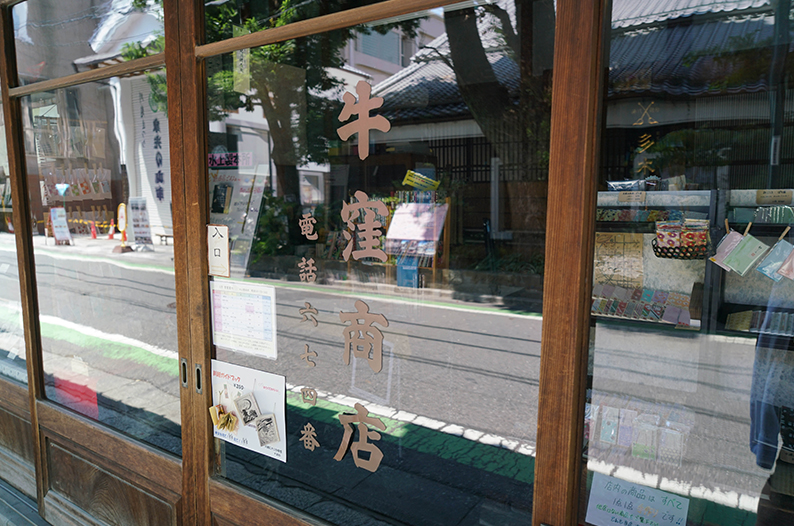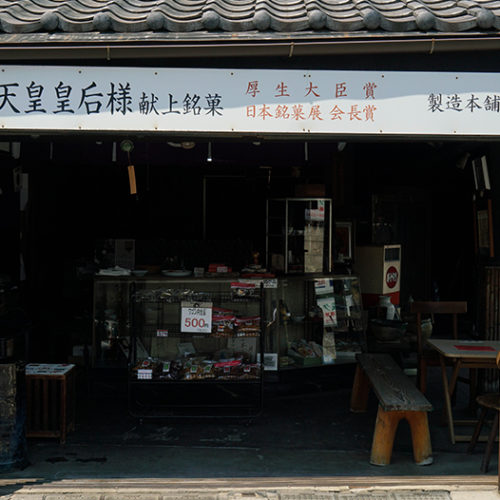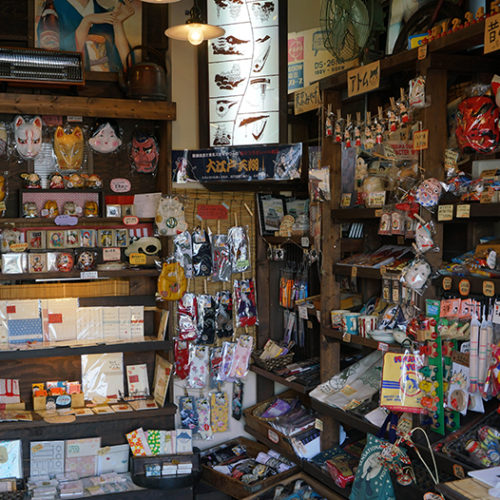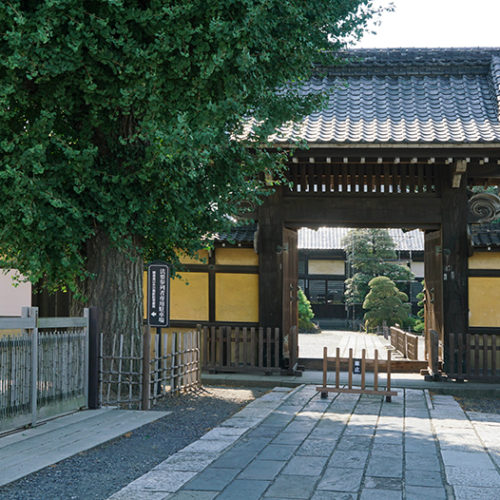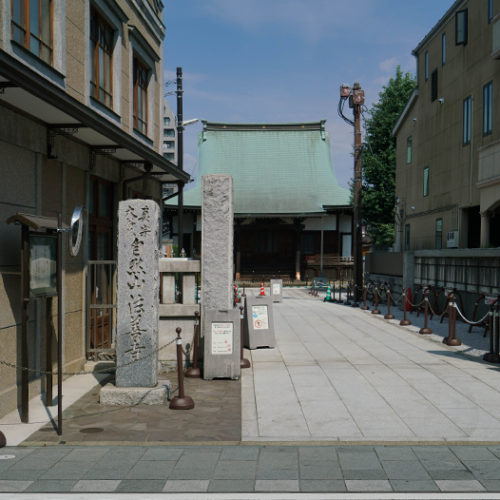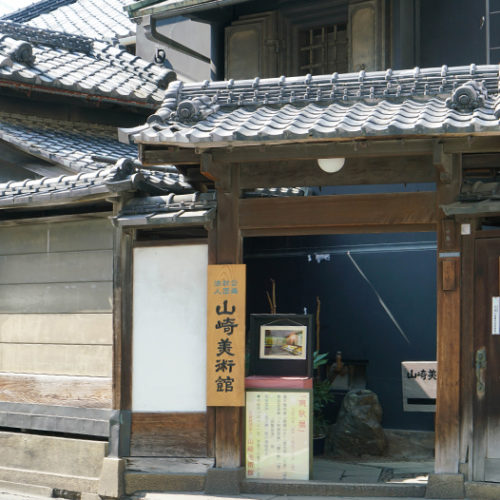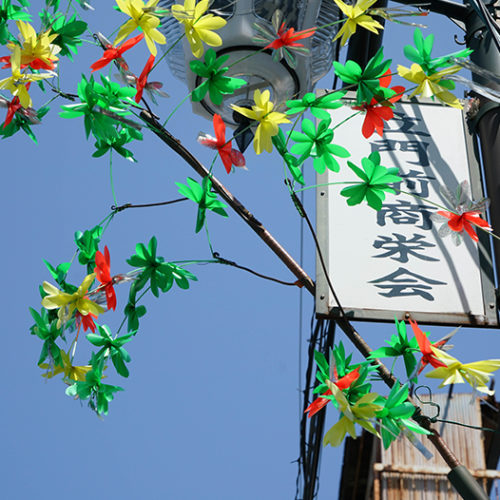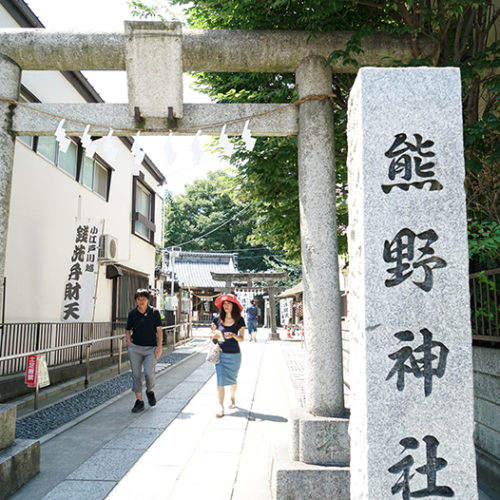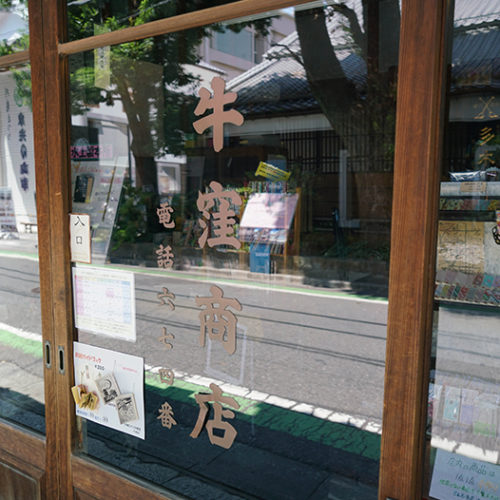Kawagoe
A lucky find during the holidays provides a lesson in resilience.
SAITAMA
The Black Town That Remembers
It’s a hot day in August when we arrive in the centre of Kawagoe, a town in Saitama whose history can be traced back to the Stone Age. Awash with tourists from many different countries, the town glows black against the unforgiving summer sun. The air-conditioned shops provide comfort as I walk past them, the icy air refreshing my steps.
We’re en route to visit family for the summer holidays. It’s mid-August, when most Japanese workers are given respite from the heat and humidity with a few days off to return to their home-towns and visit the graves of their ancestors. Known as obon, this holiday period is a celebration of the dead returning to the world of the living. On this occasion, we’re looking to buy some sake and other gifts ready for our stay.
As we venture around looking for a sake shop, I can’t help but wonder why everything is painted so black. A stark contrast in the hot summer sun, I imagine that on a dreary day, the whole place would have a haunted feel. Upon entering the shop, we’re greeted by an elderly couple, busy pottering around the various bottles, some of which seem even bigger than them. They’re friendly and helpful, like most shop staff here.
Continuing our stroll through the high street, we stop at a few souvenir shops filled with intricate gifts, puzzles and ornaments. The smell of street food from the plethora of vendors wafts into my senses every now and then.
Vying against the crowds in the street to stay in shaded areas, we come upon a friendly man and his apprentice. Standing proudly beside their rickshaws, they chat enthusiastically with us about their trade. We’re sold. Climbing into the seated carriage, I can’t wait to start moving just to feel the breeze, yet I feel a twinge of guilt at the man pulling us along. But the heat doesn’t seem to bother him and he tugs along the street with ease, stopping here and there to give us historical information.
We stop outside a department store, the very first built in Kawagoe, as our guide informs us with pride. Whizzing past shops and eateries, he explains how a great fire came one night in 1638, starting in Kawagoe Castle. The fire spread quickly through the town and most of the city was lost. The city was rebuilt carefully; however in 1893, another devastating fire broke out. The reason for the black buildings becomes clear: they were built in memory of these fires.
Along the way, we stop at the most iconic feature of Kawagoe, the Bell Tower. Tokinokane was constructed during the Meiji period by the famous carpenter, Sekine Matsugoro. Currently operated electrically, the bell strikes at 6am, midday, 3pm and 6pm, every day.
We travel around in the rickshaw for about 40 minutes, stopping here and there to listen to our knowledgeable guide talk about the exciting history of this area. His enthusiasm is catching, and I go from not knowing about this town’s existence at all, to feeling a deep connection and love for the area. The locals here have lived through so much, constantly rebuilding after fires, death and change of leadership without complaint. They’re proud of how much they have come through, and so they should be.
Our guide drops us at a little alley filled with snack and souvenir shops, and we say our farewells. After almost an hour of walking in this heat carrying visitors, I’m sure he appreciates the rest. We enter a snack shop, at which point I realise the snacks here are very different from those I usually find closer to home in Tokyo.
Burnt sugar rice tubes, green cakes and black sweets surround me. I’ve never seen such a variety and immediately buy one of everything. (Those I later send back to the UK are received deliciously, so I hear.) One of the greatest parts of touring Japan is how every place has its specialty. A history so preserved that even the smallest of towns has a grand story of where it came from.
The weather is starting to cool a little, so we take the opportunity to walk through some quiet backstreets, a vast change from the bustling high-street. I notice a very grand-looking, old house and inquire as to who might live there. It’s an old samurai rest-house, I’m told. Samurai would come here to relax, to bathe and to rest. To look at this place, you wouldn’t think that it’d been touched since it was originally built, although considering the history of the town, it must have been, albeit with dedication to preserving the traditional style.
I could spend a few days here, wandering around visiting shrines and temples, exploring the local cuisine and learning more about the many listed buildings that still stand. But we have to move on to our accommodation for the evening. Of all the places we stop along the way, Kawagoe stands out, the black buildings glowing in the sunlight, a constant reminder that when we rebuild, we mustn’t forget.
By Emma Price
August 26, 2016
Kawagoe information
Address
Additional Information about Kawagoe
Recommended Restaurant
Wakamatsuya (Japanese-style grill)
2-12-3, Nakahara-cho, Kawagoe-shi, Saitama
Tel:049-224-0777
http://tabelog.com/saitama/A1103/A110303/11004088/
Azumaya (Traditional Japanese)
1-16-1, Nishikosenba-machi, Kawagoe-shi, Saitama
TEL:049-222-0757
http://tabelog.com/saitama/A1103/A110303/11003094/
Bandai(Steak)
6-9-B1F, Wakitahonmachi, Kawagoe-shi, Saitama
TEL:049-245-7736
Milkywave (Japanese-style Western food)
17-2, Shita-machi, Kawagoe-shi, Saitama
TEL:049-222-1101
Sasakawa ( Traditional Japanese)
5-19, Ootemachi, Kawagoe-shi, Saitama
TEL:049-222-0378
http://tabelog.com/saitama/A1103/A110303/11001348/
OnoShokuhin (Tofu)
2-7-23, Senbamachi, Kawagoe-shi, Saitama
TEL:049-224-4057
- TOPCOLUMNKawagoe
- TOPDESTINATIONSSAITAMAKawagoe
